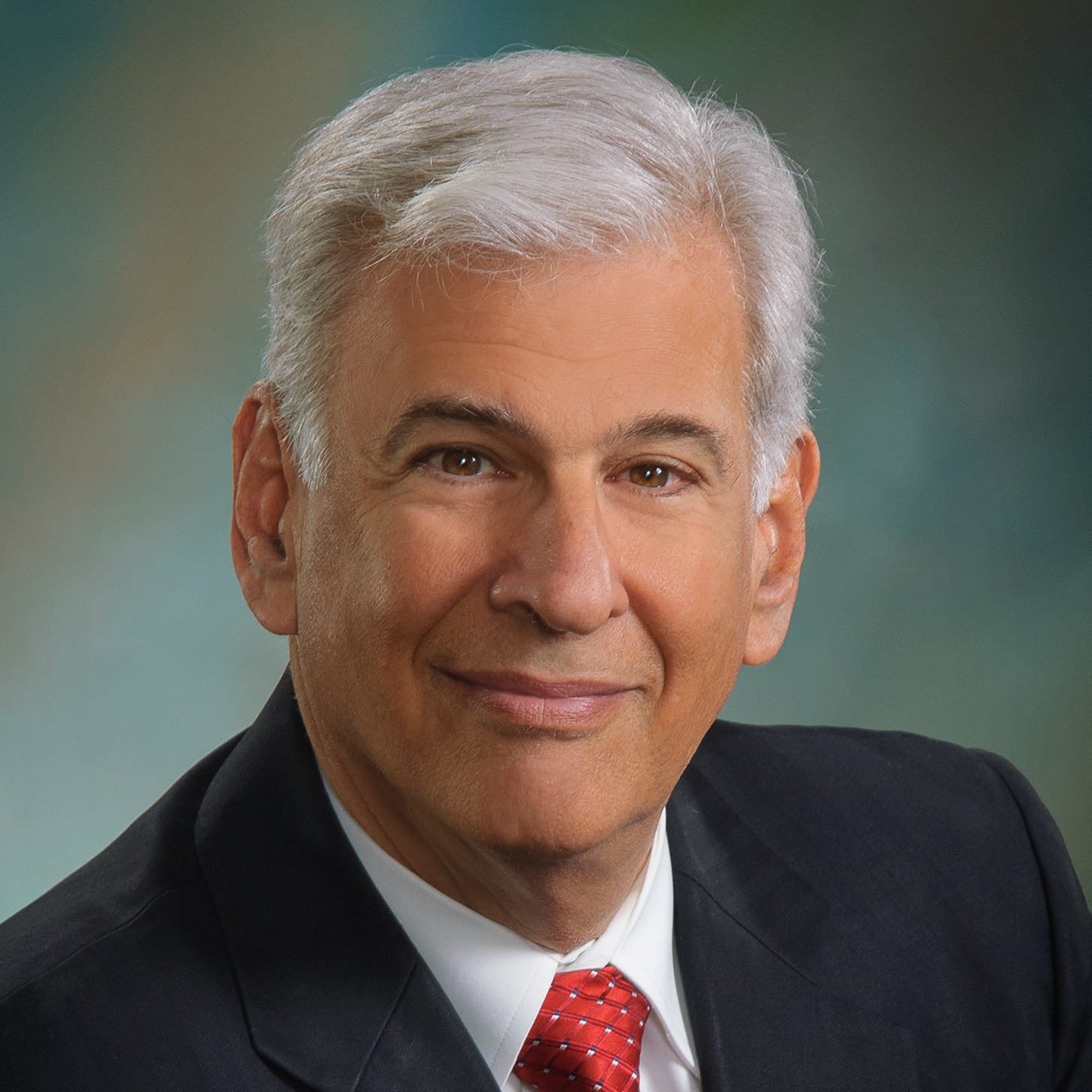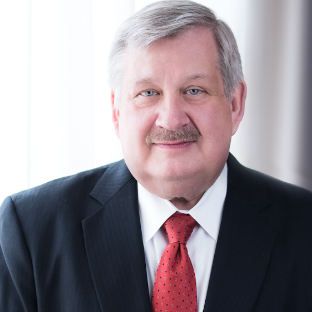Voice of Experience: Health system success requires focus on cost-effectiveness, says long-time HFMA member

“There is nothing we can’t accomplish if you don’t care who gets the credit.”
These words encapsulate the leadership philosophy of Edward M. Prunchunas, a 47-year HFMA member, a past fellow of HFMA and, as records indicate, the Association’s longest-standing active senior financial executive member.
Since 1998, Prunchunas — who is preparing to retire this summer — has been executive vice president of finance, treasurer and CFO of Cedars-Sinai Health System, serving Los Angeles and its surrounding environs. And throughout his tenure at Cedars-Sinai, all the way up through the COVID-19 pandemic, he has led the organization with an unflagging focus on cost effectiveness to achieve continual growth, both nationally and internationally, as its reputation for high-quality care and outcomes has skyrocketed.
“For the year ended June 30, 2021, we reported net revenues of just under $5 billion, with operating income of $415 million, an operating margin of 8.3%,” Prunchunas said.
This is a significant achievement, given the nature of the population Cedars-Sinai serves.
“Even though Cedars-Sinai is located at the edge of Beverly Hills, 60% of our patients are Medicare and Medi-Cal, and two-thirds of those are low-income,” Prunchunas said.

strong financials.
Promoting CEoH
As a veteran leader, Prunchunas has directly experienced many of the major developments in the evolution of our nation’s healthcare system. And as a result, he shares with HFMA a belief in the importance of promoting cost effectiveness of health (CEoH), with the goal of ensuring high-quality care with optimum outcomes will be available to all patients and consumers in the United States at the lowest possible cost.a
“Cedars-Sinai is a quaternary and tertiary care provider, catering to the sickest of the sick,” he said. “When care is needed, we step up by delivering services not only in the Los Angeles region but also nationally and internationally. Yet we also are the largest community health center in this same region. About 70% of the care we deliver is primary. So we have developed programs that delve into health issues, including social determinants of health, affecting the diverse communities we serve. One program sends outreach coaches to the underserved, providing primary care at the points of service. These coaches act as full-blown medical offices that move through the communities of need.”
It’s about ‘Choosing Wisely’
Prunchunas attributes much of his organization’s recent success to participation in the Choosing Wisely initiative of the ABIM Foundation, founded by the American Board of Internal Medicine.
“The approach promoted by Choosing Wisely is about deciding not only what is necessary for continued success but also, just as important, what is not necessary,” Prunchunas said.
“We know that an academic hospital is more expensive than a community hospital, in large part because of the teaching/research component,” he said, “But we want payers to continue to place us in their networks despite this cost differential. We want them to be certain they will not be paying extra because patients stayed too long, were provided with unnecessary services, were admitted unnecessarily or were readmitted due to a hospital error.”
Focus on quality is imperative
Another way in which Cedars-Sinai has achieved better-than-average financials has been through its adherence to Medicare-mandated quality indicator outcomes. The quality metrics are part of the leadership goals at Cedars-Sinai.
“Thirty-five percent of my incentive compensation is tied to board goals that include infection rates, drug interactions, readmission rates,” Prunchunas said. “These are the same as those for the chief medical officer and the chief nursing officer. As CFO, I need to support the many goals that keep Cedars-Sinai highly ranked nationally in the better than expected Medicare clinical and quality areas. Conversely, the CMO and CNO need to recognize and work to improve the financial outcomes of the organization.”
He suggests having consistent and cross- functional goals has been instrumental in keeping Cedars-Sinai in a leading position.
Prunchunas’ best HFMA memory
“My biggest and best memories are when I have been able to share some business problem with a peer that I met at a conference, who became my friend, and then my confidant,” Prunchunas said. “Getting this additional insight has been invaluable to my success.”
Footnote
a. Reese, E.C., “Why cost effectiveness of health should be the prime point of focus for healthcare,” HFMA, Cost Effectiveness of Health Report, Sept. 24, 2021.
5 leadership tips from Edward Prunchunas
1 Most important, set a long-term cash goal (including days cash on hand). Cash allows an organization to achieve its strategic goals and get access to capital. Along with cash, set a bond-rating goal. These goals can be long-term goals — 10 years, for example. Make progress toward this goal, even if the progress is small. Communicate both goals to other executives and to the board. Report on achievements at least annually.
2 Understand your business. If you are a CFO, know the role from bottom to top, not just the finance part. Be sure to understand the clinical and quality elements, the equipment, capital and operations, and talk to the managers and staff of all the departments. Ask them what is going right and what is going wrong. Provide support, including financially, to the vice presidents as they act as change agents.
3 Whenever possible, develop a good board and utilize them in the organization’s strategies. An experienced board can suggest good ideas and point out flaws in a strategy that help the executive leadership team facilitate the execution.
4 Hire good people and let them do their thing. Absolutely do not micromanage. Set firm goals and help staff achieve them. Guide, don’t tell. If you want solutions, go to the people who do the work.
5 Recognize that education is important and make sure you deliver it. Every employee in the finance division needs to be able to educate all levels of the organization about current and future financial trends. Take complex processes and financial ideas and communicate them in very simple terms.





